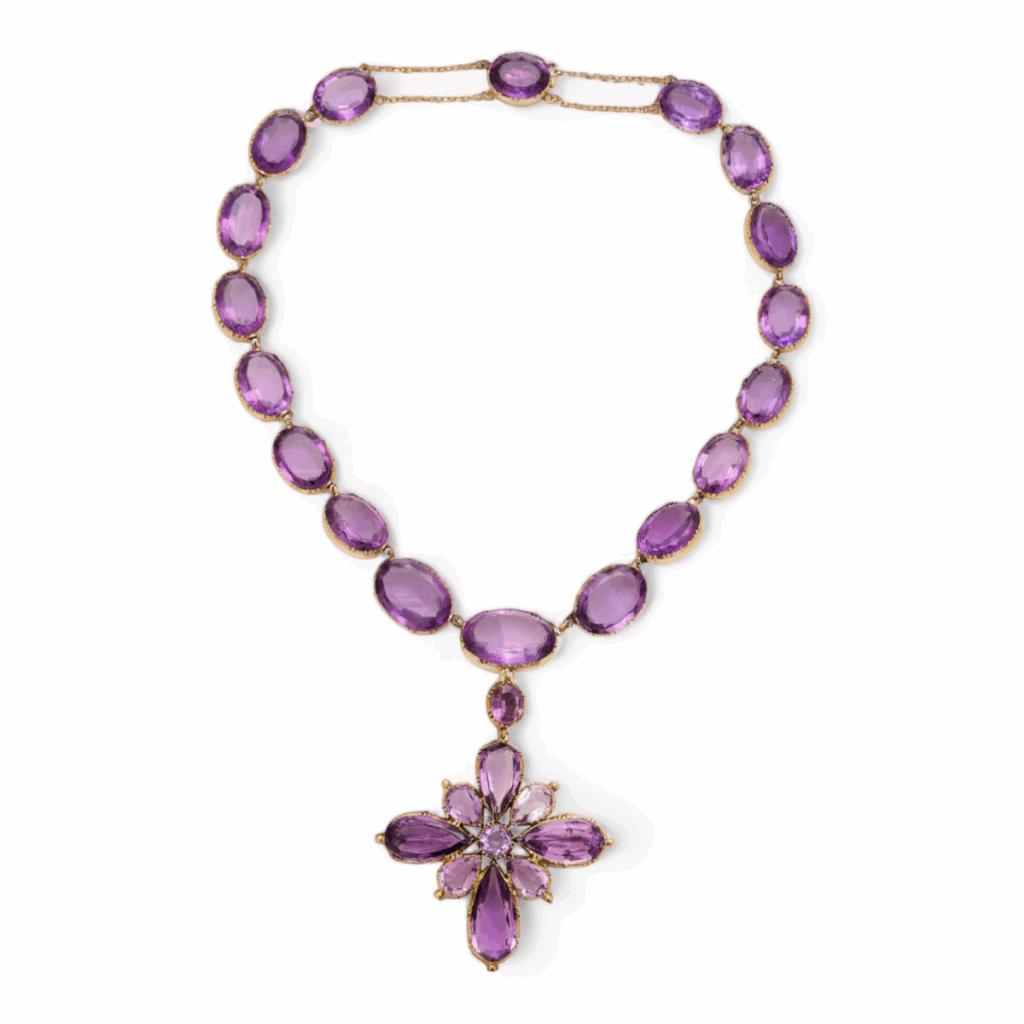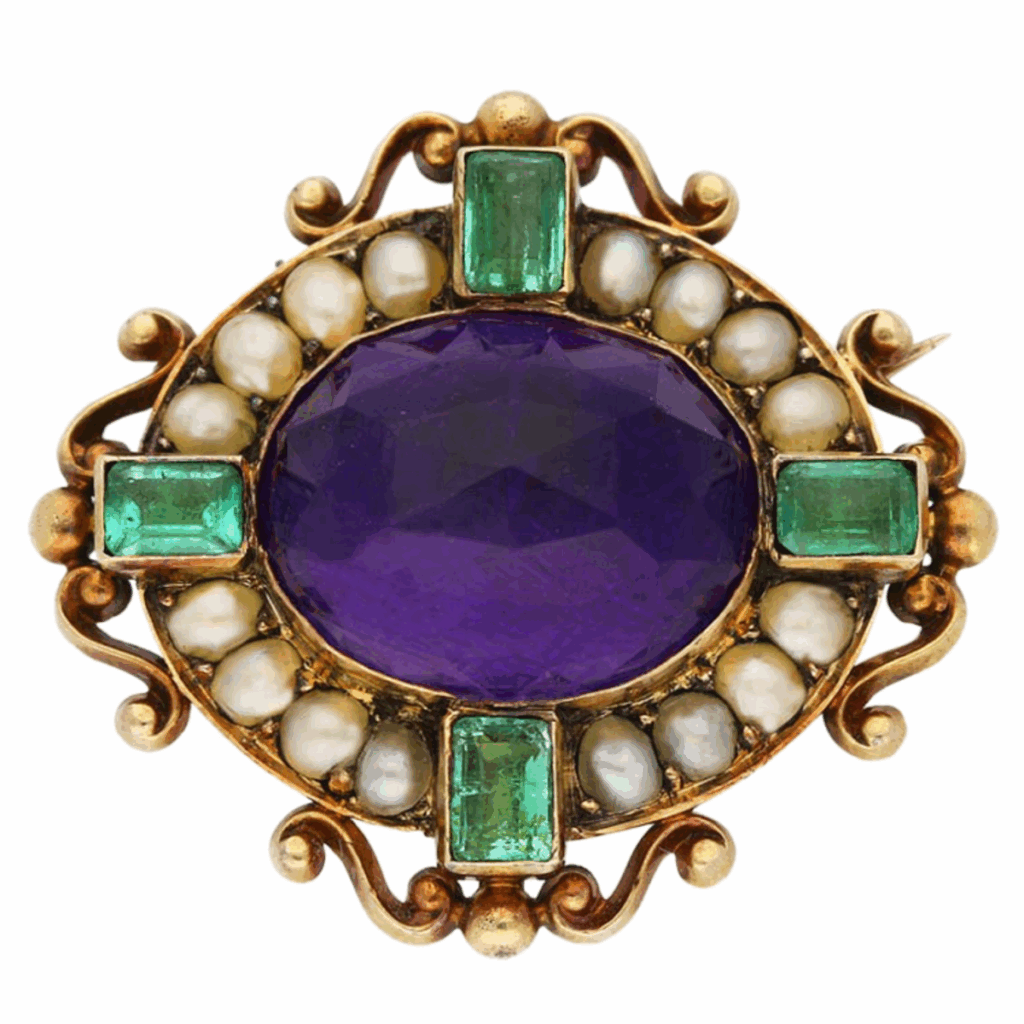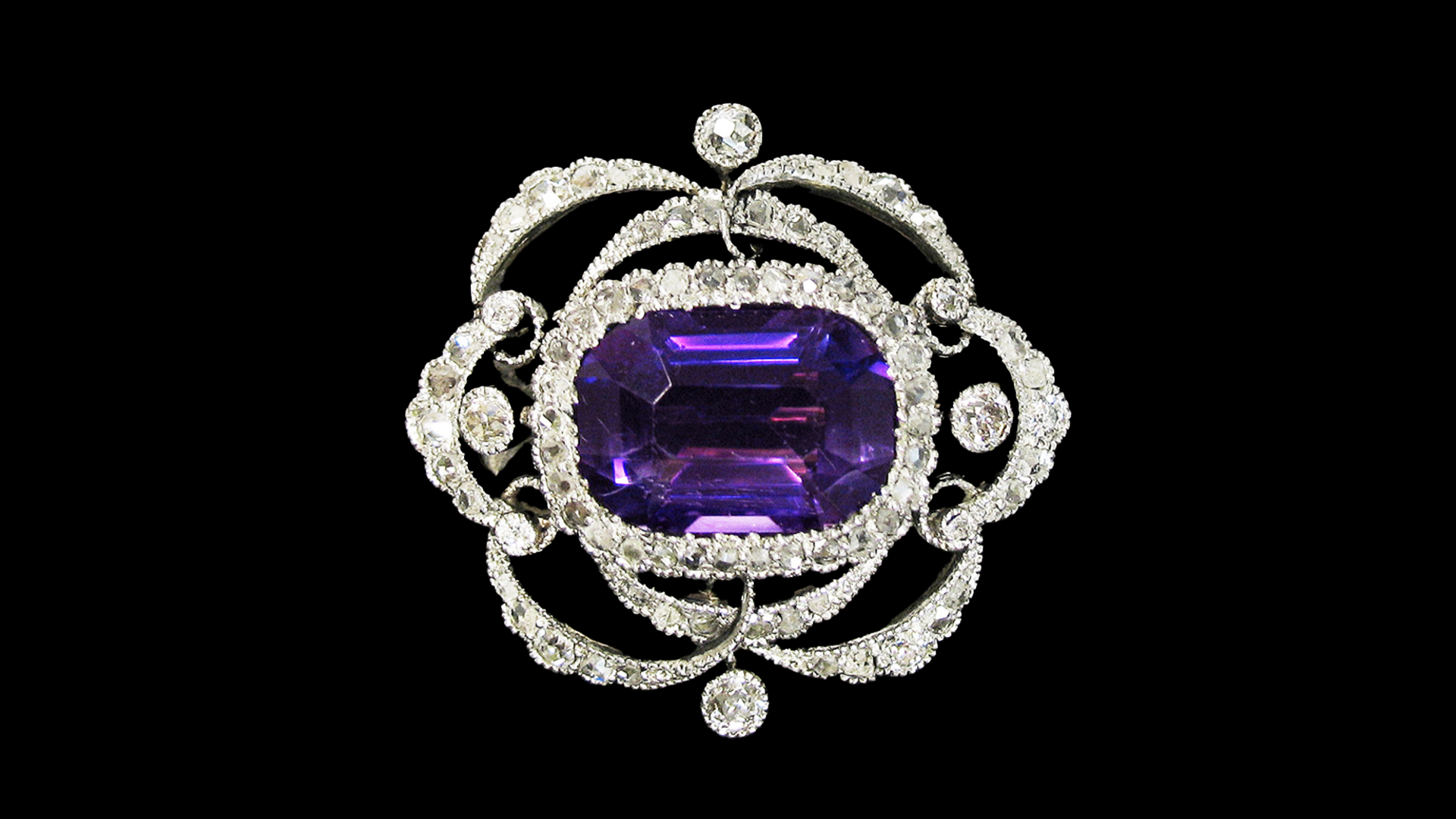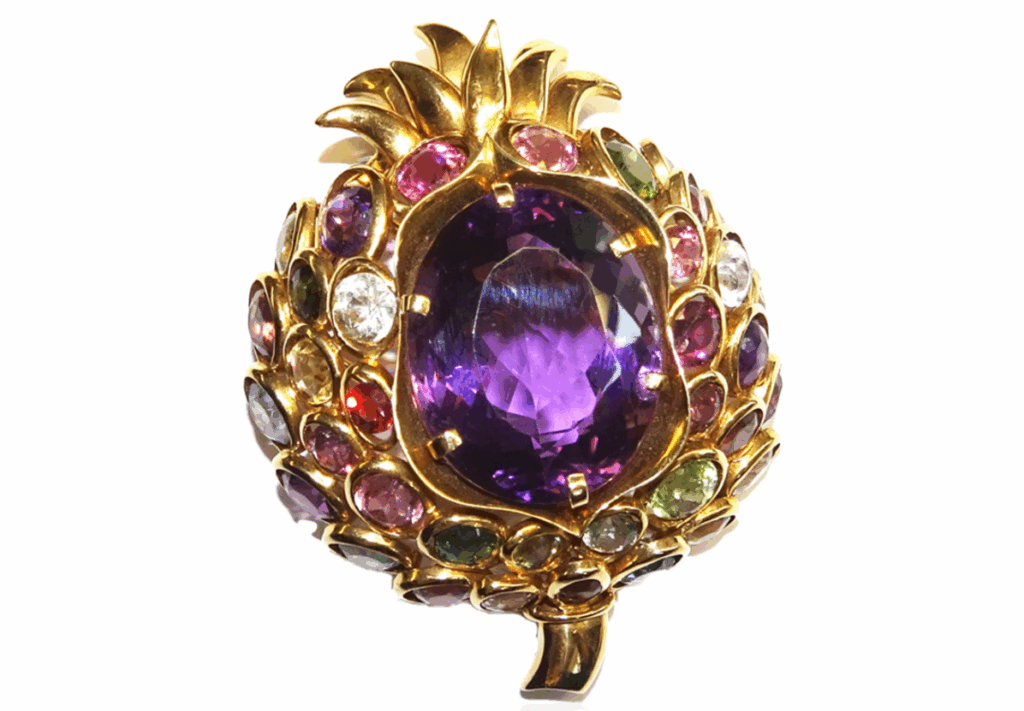Once upon a time, the regal violet gemstone, amethyst was as valuable as ruby, sapphire and diamond. This luscious purple quartz has long been a symbol of royalty and divine connection as well as piety and spirituality throughout the world and throughout history.
Thought to have been discovered some 25,000 years ago, amethyst has been a favorite gemstone since ancient times. The Egyptians were among the first to record use of amethyst, which they considered a divine gem, carving protective symbols into the stone and then wearing it as a talisman. Allegedly Queen Cleopatra wore an amethyst ring, making it a trendy gemstone of the time. The ancient Egyptians also believed that amethyst provided safe travel into the afterlife.
How Amethyst Got its Color

Revered by Roman emperors, amethyst was a symbol of wealth and opulence, a status symbol that connected its owner to divine favor and authority. In Greek and Roman cultures, amethyst was associated with the Greek God Dionysis and his Roman counterpart Bacchus. Best known for revelry and wine-making, they were also nature Gods of fruitfulness and vegetation. While, we know today that amethyst gets its color from traces of iron and exposure to natural radiation during its formation, the ancient Greeks had another version of how the gem got its purple hue.
According to Greek mythology, Dionysis is responsible for the formation of amethyst. Insulted by a mere mortal, Dionysis vowed vengeance upon the next person he saw, who happened to be a beautiful young woman, Amethystos, on her way to visit the Temple of the Goddess Artemis. Dionysis sent tigers after her; fearing for her life she prayed to Artemis for help. Artemis answered, turning Amethystos into a white quartz crystal. When his anger abated, Dionysis realized what had happened. He was repentant and cried tears of wine onto the crystal, turning it purple, which created the first amethyst. There are some variations of this myth, but they all end with the tears of Dionysis giving amethyst its purple hue.
Amethyst was important in Greco-Roman culture as both believed that it would prevent drunkenness. Viewed as a sign of sobriety and clear thinking, wine goblets were adorned with amethyst and the gem was also carved into wine goblets to prevent intoxication when imbibing.
Meanwhile in China, amethyst was ground into a powder and used medicinally to relieve pain and to soothe agitated mental states. Buddhist monks in Tibet used amethyst prayer beads because the gem is thought to focus the mind and deepen spiritual connections, beliefs that still exist today.
Amethyst in the Medieval Years

Amethyst maintained its status as a symbol of divine favor into the Middle Ages, with royals and nobles donning the gem known to show the power and wisdom of the one wearing it. During Medieval times, it was thought that amethyst relieved headaches and insomnia, anger and anxiety.
Coveted by the upper echelons of society, amethyst also held an important role in the clergy during the Middle Ages. The rich purple color of the gem, with its red or blue undertones, its connection to divinity and its alleged ability to calm and focus the mind during prayer, made it attractive to the higher ranking clergy. The gem became known as the “Bishop’s Stone” as it was frequently worn in a simple gold ring by Bishops, who believed that the gem was a connection between heaven and earth. The clergy also considered amethyst to be protection against negative thoughts and demonic encounters. Many of these ideas about amethyst held true through the Renaissance when the gem was still considered to be a symbol of divine favor, royalty, spirituality and enlightenment.
A large find of amethyst was discovered in the Ural Mountains of Russia during the 1700s, with Catherine the Great (ruler from 1762-1796) a big fan of the gems, even using them as a focal point in one of her tiara’s. The Ural Mountain amethyst was some of the finest at the time, a rich purple color with flashes of red or blue undertones adding to the allure of the gem.
Amethyst in Victorian Jewelry

During the Victorian era (1837-1901) amethyst was at the peak of its popularity. Large, faceted amethyst were linked together to form a necklace, sometimes with a detachable pendant, often a cross, also made with amethyst. At the time, it was very fashionable to wear a suite, or set, of jewelry all made in the same gemstone, easily available in large sizes amethyst was used frequently. The Victorians associated amethyst with romance and elegance, ideas that lasted into the Edwardian era.
After centuries of popularity, amethyst began to take a backseat to other gemstones in the latter half of the 1800s. There were a couple of big events that made this happen. First there was a particularly large find of amethyst in Brazil. Suddenly there was an abundance of amethyst, undermining its value, both financially and socially. With the ready availability of the gems they were no longer exclusive to the elite, who then turned their attention to diamonds, which were now readily available due to a major discovery in South Africa. Then there was the advent of electricity in the late 1800s, which changed lighting and the way that fabrics and jewels looked. Dark fabrics and colored gemstones looked garish and drab under the new electric lights, leading to an uptick in the use of diamonds. With the turn of the 20th century, there was also a movement away from the gems used in Victorian and Edwardian jewelry.
Amethyst Resurgence
The pause on amethyst didn’t last long, by the 1940s it was showing up in oversized cocktail rings and on other jewels, with more jewelry featuring this beautiful gem in the 1960s and 1970s. Today, the February birthstone is much beloved for its lush color and its message of devotion, making amethyst a charming choice for an engagement ring or everyday jewelry.
Top of Page: Edwardian diamond, 6-carat Siberian amethyst, platinum and gold brooch, courtesy J. & S.S. DeYoung.
Authored by Amber Michelle

